





During the hot summer days, they are blooming and acting like they are having a great time. Lots of flowers on one tall stalk are going up and up, with grace and pride...they are the hollyhocks.
(Editor's note: This article was originally published on May 16, 2010. Your comments are welcome, but please be aware that authors of previously published articles may not be able to respond to your questions.)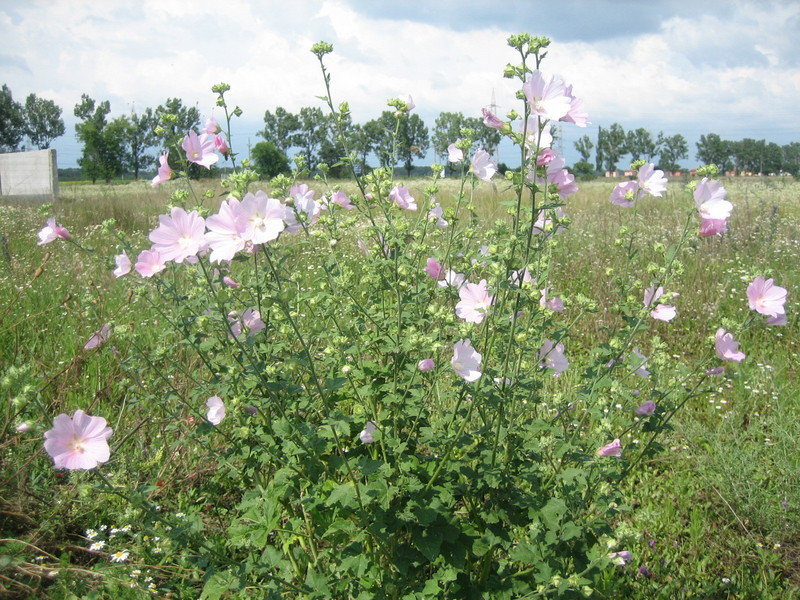 As I was growing up, they were everywhere in our gardens, along the streets, popping up from nowhere, in the middle of some dry weeds.
As I was growing up, they were everywhere in our gardens, along the streets, popping up from nowhere, in the middle of some dry weeds.
When I started to grow a hibiscus, I realized that its flowers were very similar to the hollyhocks' and I research it just to be sure. I found out that the hollyhock's latin name was Alcea rosea or A. ficifolia also called the figleaf hollyhock. It belongs to the Malvaceae family too, like the hibiscus, and you might just call it the hibiscus' cousin. I was so happy about my successful discovery! It was one of my first attempts in searching out information about a plant.
 This hardy hibiscus, the rose mallow (Hibiscus moscheutos) is also called a Hollyhock mallow or Alcea biennis.[1] I found it in the field near my house, and it was such a beauty with all the pink flowers. I first thought it was a hollyhock because it looks almost the same, except for the thinner and multiple stalks, so it seems I wasn't far from the truth.[2]
This hardy hibiscus, the rose mallow (Hibiscus moscheutos) is also called a Hollyhock mallow or Alcea biennis.[1] I found it in the field near my house, and it was such a beauty with all the pink flowers. I first thought it was a hollyhock because it looks almost the same, except for the thinner and multiple stalks, so it seems I wasn't far from the truth.[2]
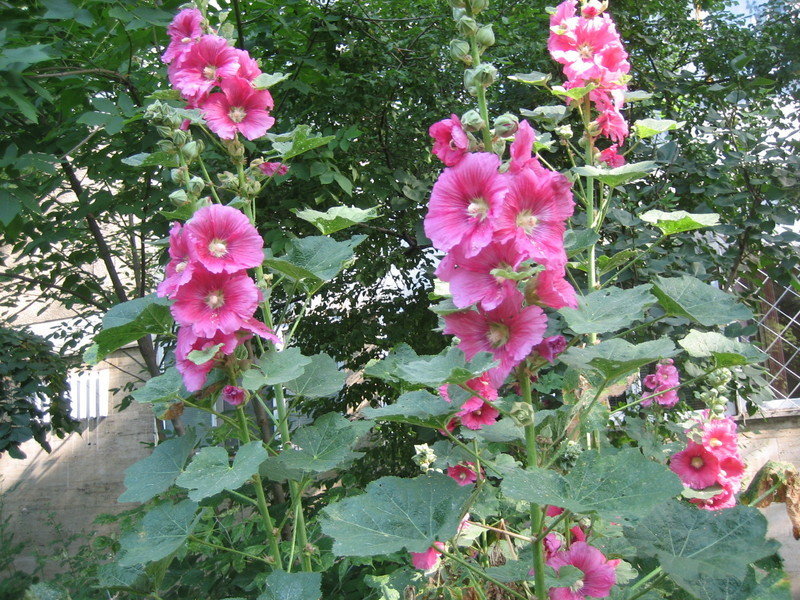 In the neighborhood where I lived as a child, many hollyhocks bloomed in other gardens, but not in ours. The flowers I saw were in many different colors, like pink, magenta, white, red. I planned to take some seeds - which I did, when I saw they were dry enough. I gathered lots of seeds, all kinds, all together in one envelope. I read one article which said the best time for sowing them was in the fall. So, it was decided: I was going to sow lots of hollyhock seeds in my garden. I planned to make something like a living fence with them; a boundary to the garden from the other entrance of our building, which is next to ours.
In the neighborhood where I lived as a child, many hollyhocks bloomed in other gardens, but not in ours. The flowers I saw were in many different colors, like pink, magenta, white, red. I planned to take some seeds - which I did, when I saw they were dry enough. I gathered lots of seeds, all kinds, all together in one envelope. I read one article which said the best time for sowing them was in the fall. So, it was decided: I was going to sow lots of hollyhock seeds in my garden. I planned to make something like a living fence with them; a boundary to the garden from the other entrance of our building, which is next to ours.
One afternoon, I went down the garden with the hollyhock seeds and with a shovel. I made a ditch and just when I was about to sow the seeds, two of my little neighbors showed up and asked me what I was doing. This wasn't the first time when the cute blonde brothers expressed an interest in the garden. I explained that I was going to sow some seeds and they asked if they could come and see. I was more than happy to show them what I was doing, so I invited the little boys to join me in the garden. They started to ask me a lot of questions about the seeds, the hollyhocks and their blooms. They helped me to sow the seeds and to cover them with dirt. Finally, I let them water the seeds. They were so happy with their accomplishment, and that made me happy too!
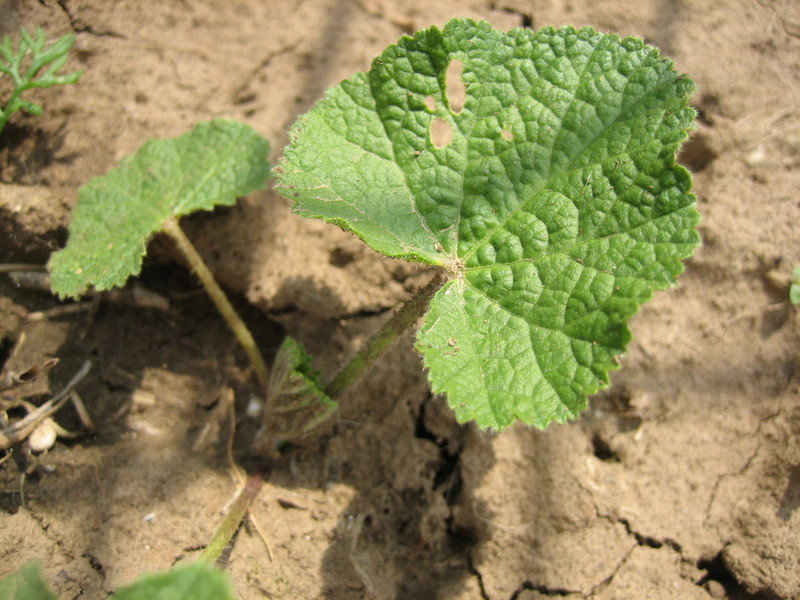
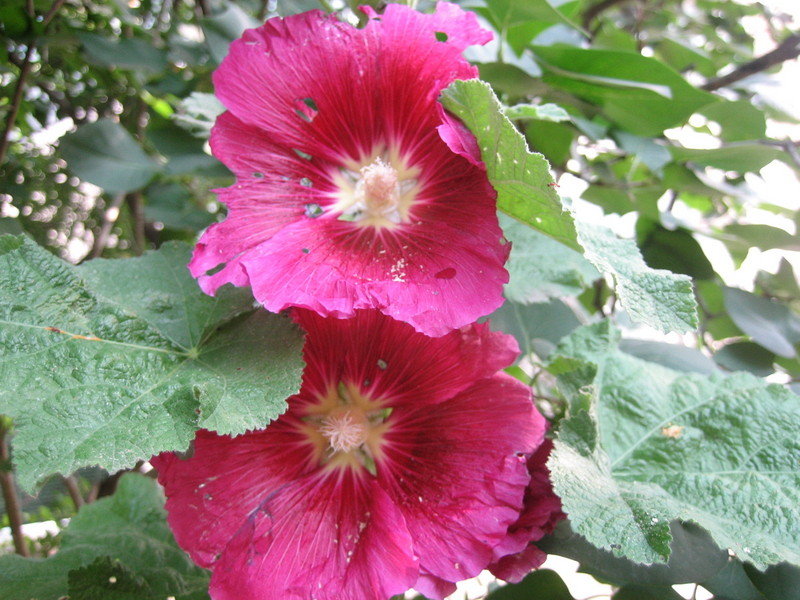 When spring came, many short plants with small leaves popped up from where we sowed the hollyhock seeds, but on a larger area. They weren't very similar to those I saw popping up in other gardens. I was beginning to wonder if they were really hollyhocks and not just some weeds, which were plentiful in our garden. I let them grow, but they wouldn't grow too much. The leaves were still small and their color was bright green, not dark green, as it should have been.
When spring came, many short plants with small leaves popped up from where we sowed the hollyhock seeds, but on a larger area. They weren't very similar to those I saw popping up in other gardens. I was beginning to wonder if they were really hollyhocks and not just some weeds, which were plentiful in our garden. I let them grow, but they wouldn't grow too much. The leaves were still small and their color was bright green, not dark green, as it should have been.
So, what do I do? When I saw that the other hollyhocks from the other gardens were already tall and blooming, I decided mine weren't hollyhocks and since I needed more space in the garden, I dug those out and planted some of the mums that needed to be divided.
Obviously, I didn't do such a great job because next spring there they were again. But this time they were showing dark green hairy leaves, so I realized that I killed dozens of them, without even knowing. In the meantime, we've had a fence installed and the hollyhocks grew along it.
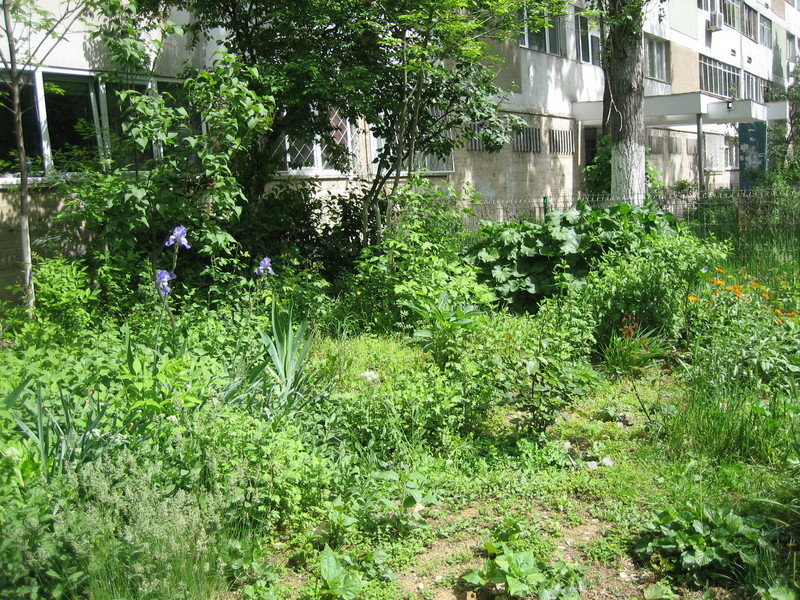
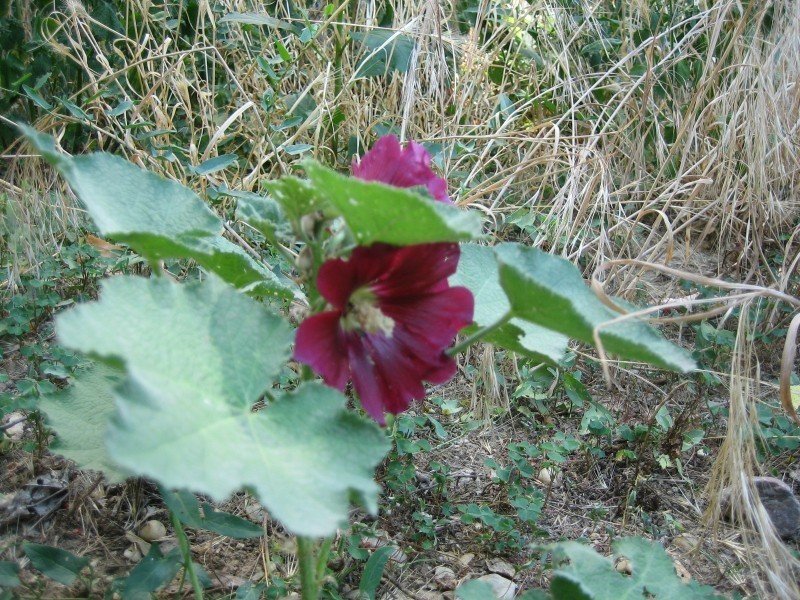
You could hardly see them in spring, but their leaves were beautiful and so big later in June.They grew well that summer, but no more than seven plants. They had huge leaves as they grew very tall and bloomed great in July. This little one, Alcea rosea var. nigra, was growing on the other side of the fence, in our neighbor's garden, but I took care to water it too. The name of "black Beauty" fits it so well!
The other hollyhocks had pink, fuchsia and magenta flowers. I identified two of them as Alcea rosea, the common hollyhock and Alcea setosa,also known as the bristly hollyhock. I also found out that Alcea rosea has many varieties of different colors: yellow, orange, red, white, purple. Those are on my list now!
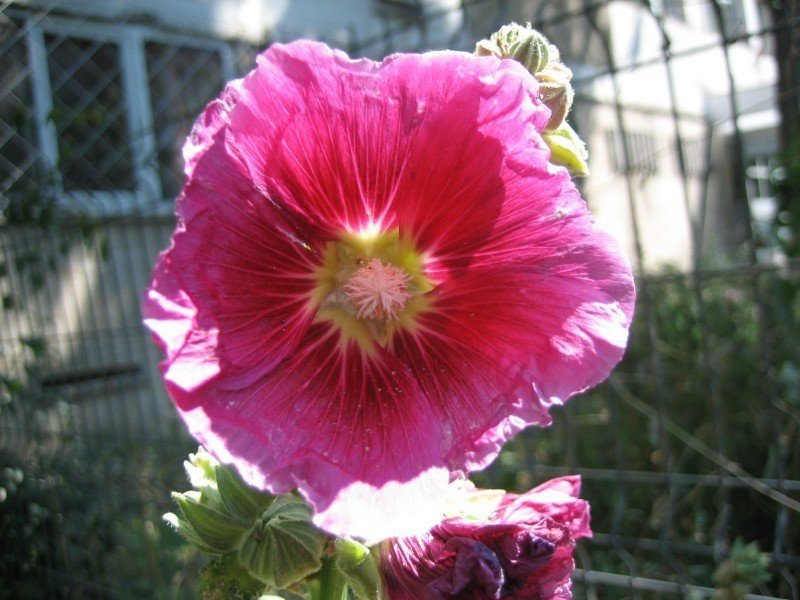
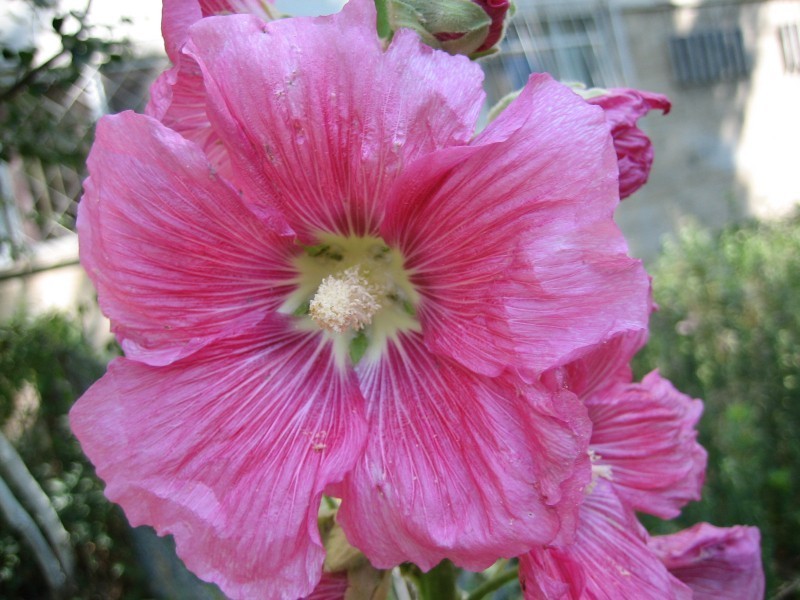
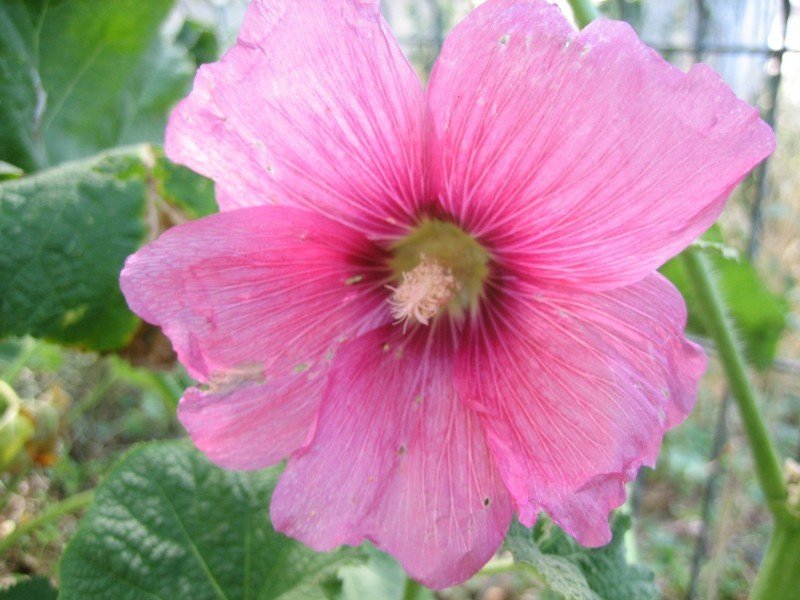
Alcea setosa(bristly hollyhock) Alcea rosea Alcea rosea
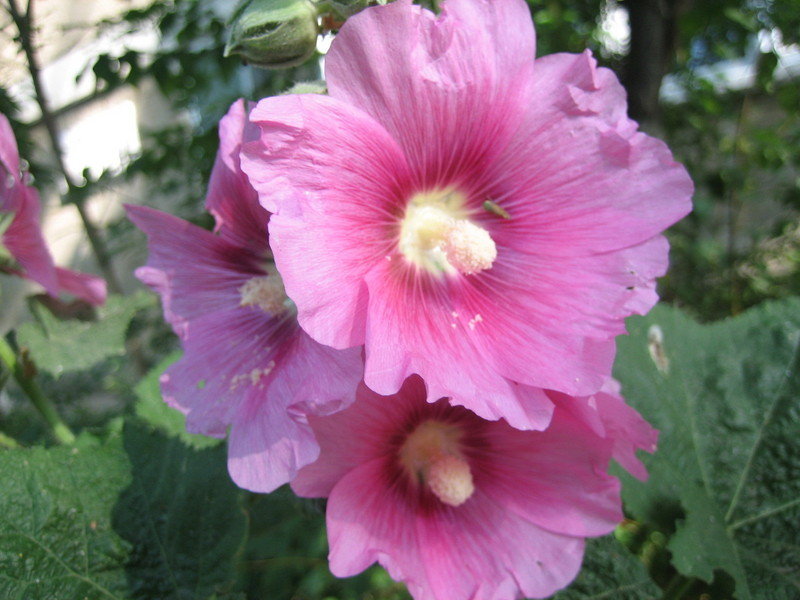 This pink one is called the Alcea rosea 'threeflowers' because of the 3 flowers bouquets growing on the stalk.[3]
This pink one is called the Alcea rosea 'threeflowers' because of the 3 flowers bouquets growing on the stalk.[3]
Last year I sowed hollyhock seeds again, this time in the garden of my new home. There were no plants until this spring, but now I know, the hollyhocks are biennials, which means they bloom in their second year of life and then they die. [4]
I am so anxious to see those colors again in my garden, but first I have to sow hollyhock seeds again this spring, so I can have blooms next year . Hopefully, my hollyhocks will make seeds in the fall and reseed and they will go on without having to sow seeds again.
[1] - http://www.thefreedictionary.com/rose+mallows
[2] - http://commons.wikimedia.org/wiki/Alcea_biennis
[3] - http://commons.wikimedia.org/wiki/File:Alcea_rosea_threeflowers.jpg
[4] - http://en.wikipedia.org/wiki/Alcea
Copyright © www.100flowers.win Botanic Garden All Rights Reserved